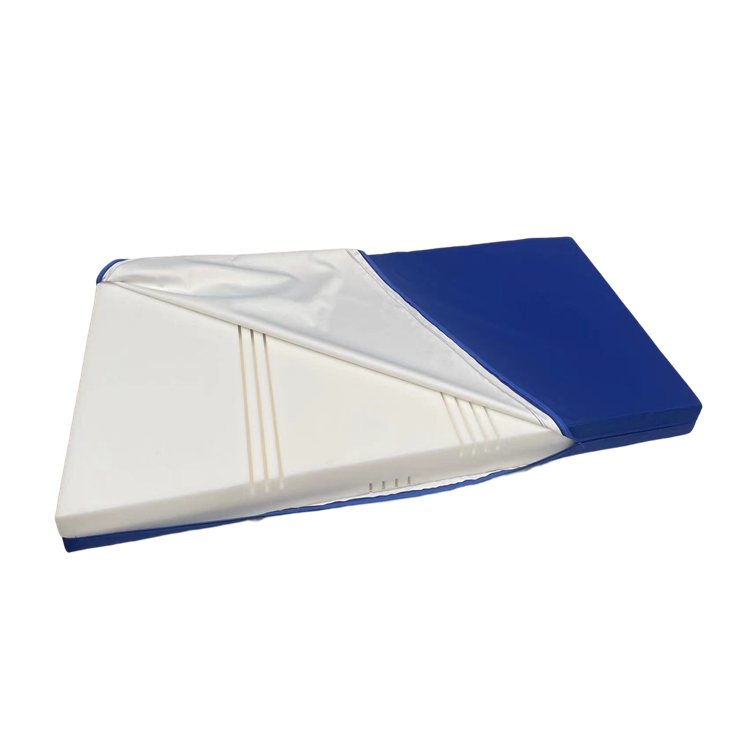Understanding the Benefits of Therapeutic Air Mattresses in Preventing Bedsores for Patients
The Role of Therapeutic Air Mattresses in Preventing Bedsores
Bedsores, also known as pressure ulcers or decubitus ulcers, are injuries to the skin and underlying tissue that result from prolonged pressure on the skin. These sores are particularly common among individuals with limited mobility, such as the elderly or those recovering from surgery. To prevent the occurrence of bedsores, healthcare professionals recommend various strategies, and one of the most effective tools is the therapeutic air mattress.
Understanding Bedsores
Bedsores develop when blood flow to a particular area of the skin is interrupted due to sustained pressure. This can occur when a person is bedridden or seated in the same position for an extended period. The skin can become damaged, leading to painful sores that can become infected if not properly treated. Key risk factors include immobility, malnutrition, and moisture. As the treatment of bedsores can be complicated and lengthy, prevention is the most effective approach.
What is a Therapeutic Air Mattress?
A therapeutic air mattress is a specially designed mattress that uses air technology to provide support and relief from pressure points. Unlike traditional mattresses, which maintain constant pressure on the skin, therapeutic air mattresses feature air cells that inflate and deflate periodically. This dynamic pressure redistribution allows for improved blood circulation, reducing the likelihood of sore formation.
Benefits of Therapeutic Air Mattresses
1. Pressure Redistribution The primary function of these mattresses is to distribute body weight evenly across the surface. By doing so, they reduce pressure on vulnerable areas, such as the heels, sacrum, and elbows, where bedsores typically occur.
therapeutic air mattress for bedsores service

2. Improved Comfort Patients using therapeutic air mattresses often report increased comfort and relief compared to traditional mattresses. The ability of the mattress to contour to the body's shape provides support while minimizing pressure points.
3. Enhanced Blood Flow The alternating air pressure promotes better blood circulation, which is essential for delivering nutrients to the skin and removing waste products. This circulatory boost further aids in preventing bedsores.
4. Ease of Use Many therapeutic air mattresses are equipped with user-friendly control systems that allow caregivers or patients to adjust settings based on individual comfort levels. Some models include features such as automatic pressure adjustments based on the patient's movements.
5. Durability and Hygiene Therapeutic air mattresses are often made with materials that are resistant to moisture and bacteria. This quality is particularly important, as moisture can exacerbate skin breakdown and increase the risk of infection.
Conclusion
The role of therapeutic air mattresses in preventing bedsores cannot be overstated. Their design and functionality make them an indispensable tool in both hospital and home care settings. By ensuring appropriate pressure relief, improved comfort, and enhanced blood flow, these mattresses play a crucial part in safeguarding the skin health of those vulnerable to pressure ulcers.
In addition to using therapeutic air mattresses, it is essential for caregivers to implement a comprehensive approach to bed sore prevention. This includes regular repositioning of the patient, maintaining proper hygiene, ensuring adequate nutrition, and conducting frequent skin assessments. By combining these strategies with the use of therapeutic air mattresses, we can significantly reduce the incidence of bedsores, ultimately leading to better health outcomes and improved quality of life for individuals at risk.
-
The Effect of Coconut Foam Mattress Breathability and Humidity Regulation on Improving Sleep QualityNewsJul.03,2025
-
How Wave Mattress Systems Improve Blood Circulation During ImmobilityNewsJul.03,2025
-
The Climate-Adaptive Sleep Revolution: Exploring the Benefits of Cooling Gel Memory Foam MattressesNewsJul.03,2025
-
Exploration of the Role of Coconut Foam Mattress in Preventing Bedsores in the ElderlyNewsJul.03,2025
-
Comparing Wave Mattress and Air Mattress: Which Is Better for Medical Use?NewsJul.03,2025
-
Analysis of Comfort and Environmental Performance of Natural Latex and Coconut Foam MattressNewsJul.03,2025
-
Multi-Layer Construction for Enhanced Performance in Gel Mattress PadNewsJun.24,2025

